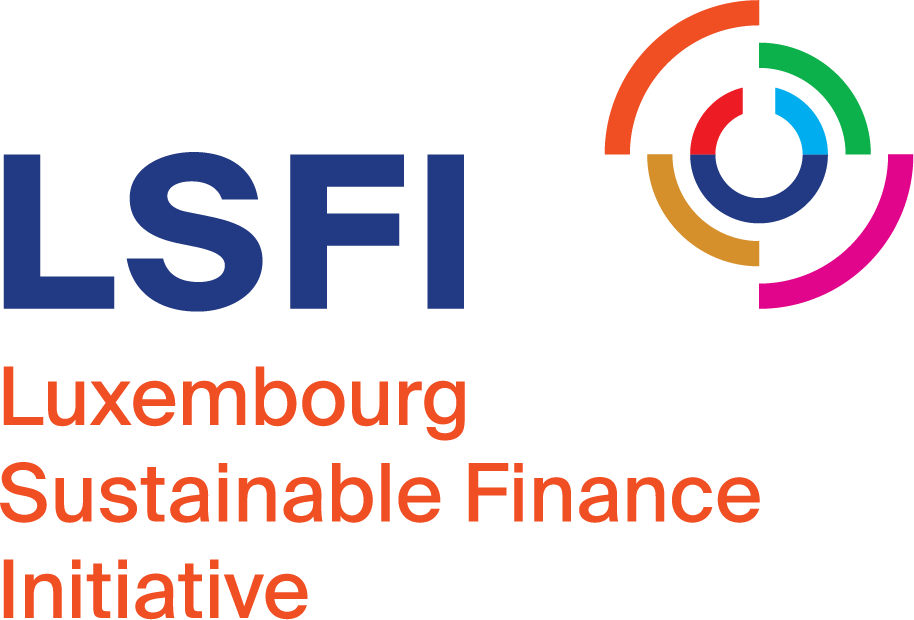It is commonly accepted that Sustainable Finance covers three dimensions: Environmental, Social and Governance. The environmental side of finance (how environment impacts finance and how finance impacts the environment) has captured the attention over the last years. This is not only due to the more and more obvious effects of climate change on our daily lives, but also, more prosaically, to the development of the EU taxonomy andrelated regulatory requirements for the European financial sector.
But what about the social dimension of Sustainable Finance? How come does this social side of finance seemto be still quite unexplored ? Can this only be explained by the challenge to define and measure social KPIs? This would be forgetting that the Inclusive and Microfinance industry, which is greatly represented in Luxembourg, has a very solid track record of taking into account the social impact of finance. With more than 3 decades of experience, these pioneers of socially responsible finance have been developing best practices that could be used by the mainstream financial sector.
To offer you an insider’s look into this captivating and soon to be regulated topic (see the current EU work on a social Taxonomy), we have spoken with Jurgen Hammer, CEO of the Social Performance Task Force (SPTF Europe), based in Luxembourg. Jurgen has more than 20 years of experience in the Microfinance industry. You will understand why SPTF was founded and how it helps measure social impact, what are his key learnings from the Microfinance industry and why the financial sector, as a whole, needs a social taxonomy. Enjoy the read!

Jurgen Hammer – Managing Director SPTF Europe
As Managing Director of SPTF Europe, what can you tell us about the social performance standards developed by the SPTF? (What they are, why they were developed, their audience, and how they have evolved).
At the beginning of the microfinance journey over 30 years ago, most discussions were around being financially viable. Afterwards, we started talking about the social pledge and how to demonstrate that our industry achieves the social promise. However, there wasn’t any common guidance, and each player followed its own way of measuring social impact. To fill this gap, the Ford Foundation (USA based) agreed to fund an initiative to create a common language on social performance for the microfinance market. To do so, it was decided to start from the practitioner level: listen to the people and organisations on the ground, enabling them to create their own language based on their experiences, practices, and learnings. In 2005, SPTF (the Social Performance Task Force) was founded.
SPTF is the global industry network that regroups all-inclusive and microfinance industry actors: financial services providers, national and regional networks, investors, asset managers and DFI’s (Development Finance Institutions). At the regulatory level, SPTF works and coordinates with AFI (the Alliance for Financial Inclusion). We like saying that SPTF “dresses the table” for the actors to sit down together, creating a dialogue among them.
In 2012, the French NGO Cerise, together with the SPTF’s Universal Standards for Social Performance Management, launched SPI4, an evaluation tool fully aligned to the Standards. For ten years, our sector has been working with these two tools; the standards, a manual of best practices to help financial service providers put clients at the centre of all strategic and operational decisions and align their policies and procedures with responsible business practices; and an Evaluation Tool to measure individual and relative performances of financial service providers on these Standards.
To ensure the Standards remain relevant and adapt to new trends and developments, we review them every five years. In this respect, we have provided the industry with standards and ways to measure where it stands. Currently, there are approximately thousand organisations following these standards. It helps them assess and benchmark themselves to implement “social performance management” (i.e., identify gaps to improve social performance, and gradually become more socially responsible)
Inclusive finance has been a pioneer in developing and measuring the social dimension of finance. What are the key learnings, and how can these help the mainstream financial sector tackle this new dimension?
This is an important question. We are a sector that must be focused on efficiency, which we gained based on our experience. The inclusive finance sector is small, but it is a financial sector with over 20 years of experience. That’s why I like to consider it like a laboratory where we tested out things for more than two decades. I would say we have two main learnings:
The first one is that as long as there is no legal obligation, there is a need for a strong willingness to coordinate and develop a self-regulatory approach. That’s what SPTF did: help creating this willingness and structure the cooperation. The second one is that our work on the social dimension, and now also on the environmental one, needs to be practitioner-driven. For example, whatever an organisation measures needs to provide added value, examples, and clear information about improving.
What are your thoughts about the major inclusive finance industry’s trends?
One big challenge for microfinance is reaching further away populations, such as those living in the countryside and remote areas. The main trend I would like to mention potentially addresses this challenge. I refer to digitalisation, which has seen a significant development due to COVID. This is a change, but we should not forget that digitalisation is still about providing a financial service to a customer. Therefore, while there are technical additionalities, we still need to build on what we have learned. In addition, the lack of digital and financial literacy remains an issue. This is also part of the client protection dimension of SPTF’s Standards. To be a responsible organisation, you must have processes that ensure that the clients understand what you’re selling.
The second trend is the mainstreaming social and environmental performance management across the entire financial sector and beyond. For me, this is a consequence of a sudden broad awareness about the severeness of the environmental crisis. Environmental and social reporting is becoming mandatory and applied to the whole financial sector. For the inclusive finance sector and the impact finance world in general, this can be an opportunity to promote and share our expertise with the broader financial and economic sectors. We don’t need to start from scratch
Moving to the EU level, the Platform on Sustainable Finance is currently working on a Social Taxonomy. Why does the financial industry need this social taxonomy?
A famous sentence says, “If you cannot measure it, you cannot improve it.” (By Peter Drucker, a management thinker of the 50’s).
Over the last months and years, sustainable finance has been accelerating, and this is due to the obvious climate change crisis, which is more visible than the social issues. The EU commission has reacted by creating a green taxonomy because there is a need to define what we are all talking about, to have a common language. This is very similar to what happened in the microfinance industry 20 years ago. It is extremely relevant to work on the social dimension because we need to address issues like gender, governance, human rights, protection and value for workers and clients. I believe that it is very positive that this discussion is happening at the EU level, and we are, as a sector, trying to help develop this EU social taxonomy, building on our experience.
For the Social Taxonomy to be a success, what should be its goals?
It needs to be implementable and valuable on the ground and not just be a check box exercise. It needs to make sense for the users – and that’s a difficult challenge. Regulatory entities sometimes find it challenging to find ways to listen to the practitioners on the ground. But today we all seem to agree on one thing: we need to avoid greenwashing or social washing in our economies. For this, we need practical and pragmatic regulation.
From your experience, what are the main challenges associated with the social dimension? What are the challenges associated with measuring it and tracking progress?
The biggest challenge is that the social dimension is not as easily quantifiable as the environmental one. The environment dimension can look at KPIs such as emissions or toxic waste. In the social one, it is more complex to define quantifiable indicators. In the inclusive and microfinance industry, we focused on management practices, for example, knowing what a responsible treatment of staff includes: training, education, insurance etc. This is one of the challenges that the EU Commission faces: develop different and adapted formats to evaluate social and environmental dimensions. We also need to take into consideration the local environments, especially when we want to measure end-client level indicators in the developing economies of the South.
If you had to give some tips to financial players who want to embed social considerations into their investments, could you tell us one thing they should do and one they should not?
I would like to start with a general reflection. We have accepted that our companies have many staff working on financial reporting and financial accounts over the entire year. However, the social performance evaluation is sometimes done by one person and sometimes part-time. This needs to change. There need to be more human resources dedicated to this type of reporting. An organisation should also understand that social and environmental reporting teams do not take away profitability. On the contrary, it will make financial performances more stable and sustainable in the long run. If you miss out on your organisation’s social and environmental dimensions and your investments, financial stability will be a short run.
In addition, we should also take this step by step and acknowledge that it is a learning process and that everyone’s ultimate goal is a better economic system. On the positive side, we are starting to see this change. Thanks for instance to the new EC disclosure regulations, organisations are beginning to hire professionals to work in this field. I am confident that we will live in a different world in a few years.





